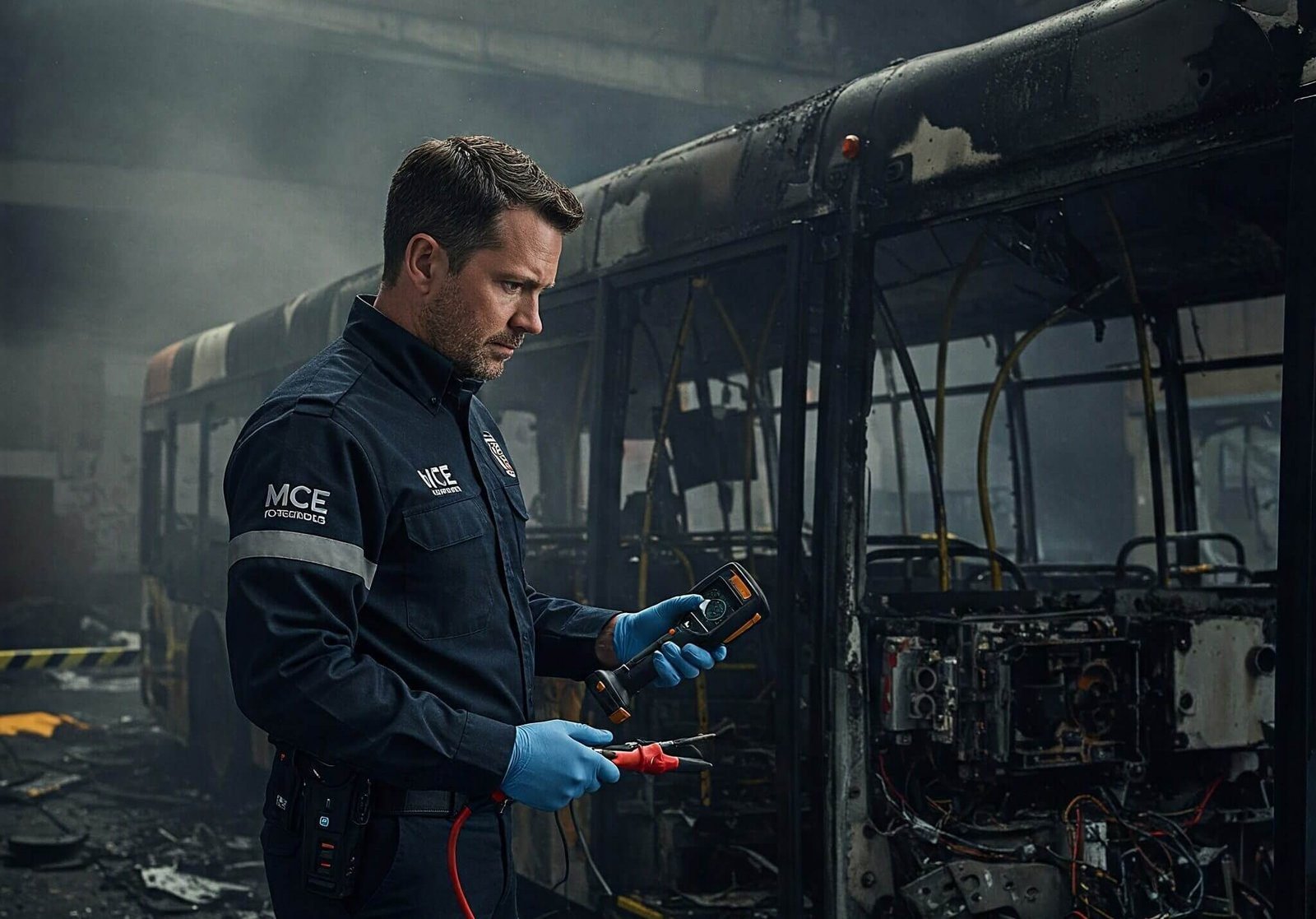The rise of electric vehicles (EVs) has introduced new complexities in insurance claims, particularly when it comes to fire-related incidents. Unlike traditional internal combustion engine (ICE) vehicle fires, EV fires present unique challenges due to the nature of lithium-ion battery technology, thermal runaway events, and the specialized forensic investigation required to determine the root cause. As forensic engineers working with the insurance claims industry, we’ve observed a significant increase in these claims, requiring specialized approaches to properly assess causation and liability.
One of the most pressing issues in EV fire investigations is the prolonged and unpredictable nature of battery fires. A single cell failure can escalate into a full-blown thermal runaway event, generating extreme heat and potential reignition hours or even days after the initial incident. This complicates both firefighting efforts and post-incident inspections, raising concerns about secondary damage, liability, and salvageability of affected vehicles. This means that if just one of the individual battery cells within the EV’s battery pack malfunctions or gets damaged, it can trigger a dangerous and uncontrollable chain reaction (thermal runaway) that releases extreme heat. This intense heat can lead to fires that are difficult to extinguish and can even reignite hours or days later. This unpredictability makes it harder for firefighters and complicates the job of investigators who need to examine the scene while being aware of the potential for reignition. It also raises concerns for insurers about additional damage that might occur after the initial fire, who is responsible, and whether the vehicle can even be repaired or salvaged.
From our experience in the field, the investigative complexity of these claims stems significantly from the intricacies of the vehicle’s electrical architecture. Examining the High-Voltage Energy Storage System (HV ESS) and its network of HV cables, alongside the sophisticated LV controls that govern its operation, demands a specialized skillset. The efficient operation of the electric motor relies on the inverter, which converts DC power from the HV ESS to AC. Communication between various electronic control units, including those managing safety systems and the powertrain, occurs over the CANBus network. Battery management system (BMS) data has become an essential component in our forensic analyses. Retrieving this information requires specialized equipment and expertise to access critical pre-fire diagnostics. This technical data provides invaluable insights that complement physical evidence examination, helping claims professionals develop a more complete understanding of the incident sequence and the role of the vehicle’s integrated power delivery.
Charging-related thermal events present particularly complex scenarios in our forensic work. The interconnectedness of the vehicle’s internal systems, the external Electric Vehicle Supply Equipment (EVSE), and the broader power supply network introduces numerous potential contributing factors. Our engineering analysis often needs to examine the Battery Energy Control Module (BECM) functionality, EVSE performance, and building electrical system integrity to properly identify causation. Furthermore, EVs utilize converters to step down the high-voltage DC power to lower voltages required by various auxiliary systems. These interconnected subsystems require a nuanced understanding to effectively analyze incident origins.
Beyond passenger EVs, commercial fleets and electric buses introduce another layer of complexity with their high-voltage systems operating under demanding conditions. Issues such as insulation breakdown within the HV cables, connector failures within the HV ESS, and thermal stress impacting the LV controls become critical factors in fire investigations. The implications for insurance claims are significant, as these incidents often involve multiple stakeholders, including manufacturers, fleet operators, and utility providers.
Another challenge adjusters face is the evolving regulatory landscape surrounding EV fire risks. As governments and industry bodies introduce new safety standards, compliance failures related to these intricate electrical systems could play a role in liability disputes. Additionally, handling compromised High-Voltage Energy Storage Systems from salvaged vehicles requires specialized procedures for safety and environmental reasons, further complicating the claims process.
While the industry continues to adapt to these challenges, one thing remains clear: effective EV fire investigations require a multidisciplinary approach with a strong emphasis on expertise in the vehicle’s electrical architecture. Understanding the complexities of the High-Voltage Energy Storage System, the network of HV cables, the function of the LV controls, the role of the inverter, the communication over the CANBus, and the operation of DC-DC converters is vital in these investigations. At Mission Critical Engineers Ltd., we specialize in forensic engineering for complex failure analysis, including EV fire cases. By combining automotive engineering knowledge with deep understanding of these electrical systems, failure diagnostics, materials science, and chemical analysis, we aim to provide claim adjusters with the critical insights needed to resolve claims efficiently and accurately in this evolving field.
Are you encountering challenges with EV-related claims? Let’s discuss how our specialized expertise can help you navigate this evolving field. Reach out to explore how we can support your investigations and claims assessments.



